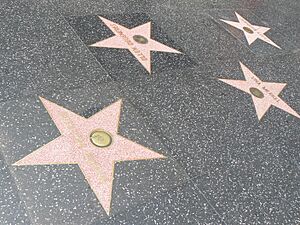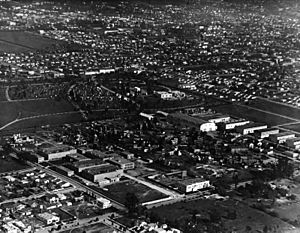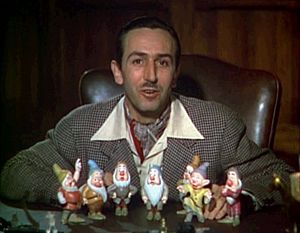Cinema of the United States facts for kids
Quick facts for kids Cinema of the United States(Hollywood)  |
|
|---|---|

The Hollywood Sign in the Hollywood Hills, often regarded as the symbol of the American film industry
|
|
| No. of screens | 40,393 (2017) |
| • Per capita | 14 per 100,000 (2017) |
| Main distributors |
|
| Produced feature films (2016) | |
| Fictional | 646 (98.5%) |
| Animated | 10 (1.5%) |
| Number of admissions (2017) | |
| Total | 1,239,742,550 |
| • Per capita | 3.9 (2010) |
| Gross box office (2017) | |
| Total | $11.1 billion |
The cinema of the United States is often called Hollywood. This is because many major film studios are located there. Hollywood has greatly influenced the global film industry since the early 1900s.
The main style of American movies is called classical Hollywood cinema. This style developed between 1910 and 1962. It is still common in most films made today. Even though French inventors Auguste and Louis Lumière are credited with starting modern cinema, American movies quickly became very important.
The U.S. film industry releases over 600 English-language films each year. This makes it the fourth largest film producer in the world. Only India, Japan, and China make more movies. Hollywood is also known for making many of the world's most successful and popular movies.
Hollywood is considered the oldest film industry. It is where the first film studios and production companies started. It is also the birthplace of many movie types, like comedy, drama, action, musicals, romance, horror, science fiction, and epics. Hollywood has set an example for other film industries around the world.
In 1878, Eadweard Muybridge showed how photography could capture motion. Then, in 1894, the first commercial movie show happened in New York City. It used Thomas Edison's kinetoscope. In the years that followed, silent film making grew a lot. Studios formed and moved to California. Movies and their stories also became much longer.
The United States made the world's first movie with synchronized sound, The Jazz Singer, in 1927. It led the way in developing sound films. Since the early 1900s, the U.S. film industry has been based in and around Hollywood, California. Director D. W. Griffith helped create the way films tell stories. Many critics often call Orson Welles's Citizen Kane (1941) the greatest film of all time.
Many top-earning Hollywood movies make more money outside the United States. The U.S. is also a leader in movie technology.
Contents
History of American Cinema
Early Days and the Move West
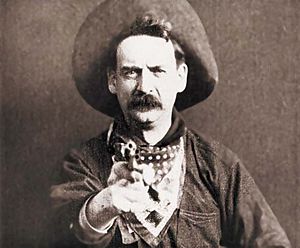
The first time photographs captured motion was with pictures of a running horse by Eadweard Muybridge. He took these photos in California using many cameras in a row. This success inspired inventors to create similar devices. In the U.S., Thomas Edison was one of the first to make such a device, called the kinetoscope.
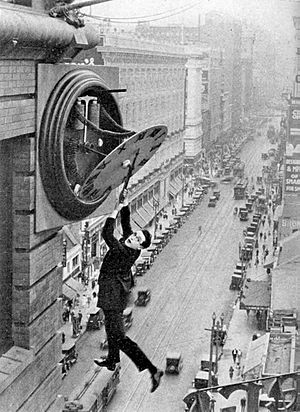
The story of American cinema began on the East Coast. For a while, Fort Lee, New Jersey, was the movie capital of America. The industry started in the late 1800s with Thomas Edison's "Black Maria". This was the first motion-picture studio in New Jersey. Many film companies built studios there in the 1910s and 1920s. Famous actors like Mary Pickford started their careers there.
Other Eastern cities like Chicago and Cleveland also had early film production. In the West, California quickly became a major film center.
Many filmmakers moved to Los Angeles, California. This was because Los Angeles had mild winters and many different places to film. It was also close to the Mexican border. This was important because filmmakers sometimes needed to avoid agents from Edison's company. Edison owned many patents for making movies. By 1912, most major film companies had moved to Southern California.
Hollywood Becomes Famous
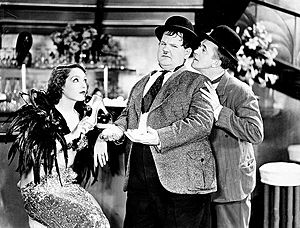
In early 1910, director D. W. Griffith came to the West Coast with his acting group. They started filming in Los Angeles. The group then went to Hollywood, a small village that welcomed them. Griffith filmed the first movie ever shot in Hollywood, In Old California. This was a drama about California in the 1800s.
After hearing about Griffith's success, many filmmakers moved west. They wanted to avoid the fees from Thomas Edison's patents. California's good weather and lower costs helped almost all filmmaking move to the West Coast by the 1930s.
In Los Angeles, the studios and Hollywood grew. Filmmakers liked the warm climate and sunshine. This allowed them to film outdoors all year. They also liked the varied scenery. After World War I, the European film industry declined. This helped the U.S. film industry become even stronger.
In the early 1900s, many Jewish immigrants found jobs in the U.S. film industry. They started by showing short films in small theaters called nickelodeons. Soon, people like Samuel Goldwyn, William Fox, Carl Laemmle, Adolph Zukor, Louis B. Mayer, and the Warner Brothers started their own movie studios. There were also female directors and producers like Lois Weber and Alice Guy-Blaché.
More moviemakers came from Europe after World War I. These included directors like Alfred Hitchcock and actors like Rudolph Valentino. They joined American actors to create a fast-growing industry. In the mid-1940s, studios made about 400 movies a year. About 90 million Americans watched movies every week.
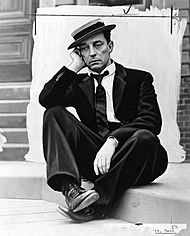
Sound became common in Hollywood in the late 1920s. After The Jazz Singer came out in 1927, other studios started using sound. By 1928, a company called Electrical Research Product Incorporated (ERPI) controlled most film sound distribution.
One effect of "talkies" (movies with sound) was that many silent film actors lost their jobs. Their voices might not have been good, or they struggled to remember lines. In 1922, politician Will H. Hays started the Motion Picture Producers and Distributors of America (MPPDA). This group later became the Motion Picture Association of America.
Early American sound films were not popular in other countries. The technology for dubbing (changing the language) was not good yet. So, American companies tried making foreign-language versions of their films. Around 1930, they opened a studio in France. They used the same sets and costumes for different language versions.

Foreign actors and writers were brought to Hollywood for these films. These foreign versions had smaller budgets and were often filmed at night. They were not very successful because of the lower quality and mixed accents.
The Golden Age of Hollywood
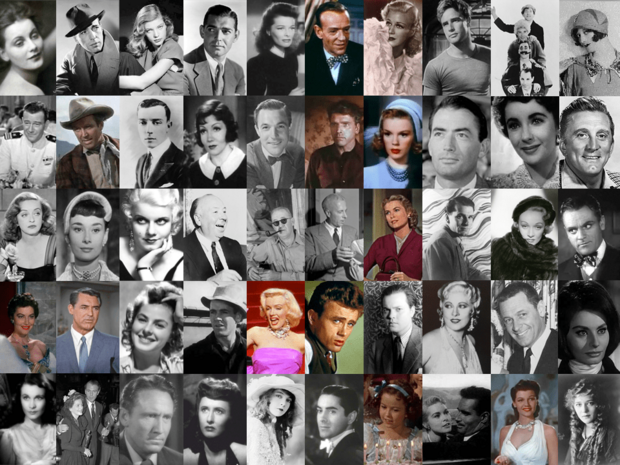
The Golden Age of Hollywood refers to a special time in American cinema. It lasted from about 1913 to 1962. During this period, thousands of movies were made by Hollywood studios. This style became strong after The Jazz Singer was released in 1927. This movie brought sound to films and greatly increased profits.
Most Hollywood movies followed a specific pattern. They fit into genres like Westerns, slapstick comedies, musicals, or animated cartoons. The same creative teams often worked on films for the same studio. For example, Alfred Newman worked at 20th Century Fox for 20 years.
Each studio had its own unique style. You could often guess which studio made a film just by seeing the actors in it. MGM, for instance, was known for having many famous stars.
After The Jazz Singer was a huge success, Warner Bros. bought its own movie theaters. Other studios like Loews (which owned MGM) and Fox Film Corporation also owned theaters. By the 1930s, five big studios controlled almost all major movie theaters in the U.S. These were MGM, Paramount Pictures, RKO, Warner Bros., and 20th Century Fox.
The Studio System
During this time, movie companies used a "studio system." The major studios employed thousands of people. This included actors, producers, directors, writers, and technicians. They also owned or leased large movie ranches for filming. These studios owned hundreds of theaters across the country. They always needed new movies to show.
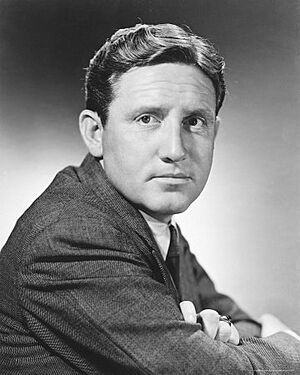
In 1930, Will Hays created the Hays (Production) Code. This code set rules for what could be shown in movies. It was enforced starting in 1934. Movies that did not get approval had to pay a large fine. They also could not be shown in theaters controlled by the big studios.
Throughout the 1930s, MGM was a leading studio. They had top stars like Clark Gable, Greta Garbo, and Judy Garland. MGM is also known for creating the "Hollywood star system".
Another big achievement was Walt Disney's animation company. In 1937, Disney made Snow White and the Seven Dwarfs. This became the most successful film of its time. Then, in 1939, Gone with the Wind was released. It is still one of the most successful films ever, when you adjust for inflation.
Many great movies came from this time. Because so many movies were made, not every one had to be a huge hit. Studios could take chances on smaller films. Citizen Kane, directed by Orson Welles, is an example. It is often called the greatest film of all time. Directors like Alfred Hitchcock also fought with studios to make their artistic visions happen.
The year 1939 was especially great for movies. Classics like The Wizard of Oz and Gone with the Wind were released. Other famous films from the Golden Age include Casablanca and It's a Wonderful Life.
The studio system and the Golden Age of Hollywood began to change in the late 1940s. Two main reasons were:
- A government lawsuit that separated film production from showing movies in theaters.
- The rise of television.
In 1938, Disney's Snow White and the Seven Dwarfs became a huge hit. It was an independent film, not made by a big studio. This showed problems with how studios sold movies. Studios often forced theaters to buy a whole year's worth of films at once.
The U.S. Supreme Court eventually ruled that studios owning theaters was against the law. Because of this, studios started to let actors and staff go from their long-term contracts. This meant that each movie could have a different cast and creative team. This changed how Hollywood made films.
New Hollywood and Modern Cinema

After the Golden Age, a new style of filmmaking emerged. This is called New Hollywood. Directors who went to film school learned new techniques from Europe. The 1967 film Bonnie and Clyde helped American cinema become popular again.
Filmmakers like Francis Ford Coppola, Steven Spielberg, George Lucas, and Martin Scorsese made movies that honored film history. They also developed new genres and techniques.
In the 1970s, New Hollywood films were often popular and praised by critics. Early films like Bonnie and Clyde were low-budget. But huge successes like Spielberg's Jaws and Lucas's Star Wars led to the modern "blockbuster". Studios then focused on making very big hits.
Sometimes, these young directors went over budget or schedule. This caused problems for studios. For example, Michael Cimino's Heaven's Gate caused United Artists to go bankrupt. However, other films like Coppola's Apocalypse Now eventually became masterpieces.
The Rise of Blockbusters and Independent Films
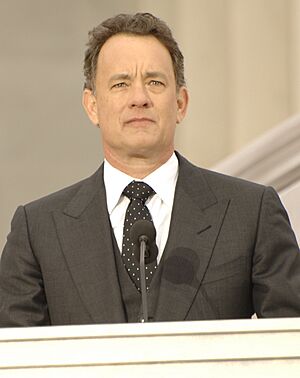
The PG-13 movie rating was created in 1984. This was for films that were between PG and R. It happened after movies like Indiana Jones and the Temple of Doom and Gremlins (both 1984) had violent scenes.
In the 1990s, filmmakers had new technology. Dick Tracy (1990) was the first film with a digital soundtrack. Batman Returns (1992) used Dolby Digital sound, which became standard. Computer-generated imagery (CGI) also improved greatly. It became possible to put film images into a computer and change them.
The possibilities of CGI were clear in Terminator 2: Judgment Day (1991). Jurassic Park (1993) used CGI to create realistic-looking dinosaurs. Jackpot (2001) was the first film shot completely digitally. For Titanic, director James Cameron pushed special effects even further.
| Year | Tickets | Revenue |
|---|---|---|
| 1995 | 1.22 | $5.31 |
| 1996 | 1.31 | $5.79 |
| 1997 | 1.39 | $6.36 |
| 1998 | 1.44 | $6.77 |
| 1999 | 1.44 | $7.34 |
| 2000 | 1.40 | $7.54 |
| 2001 | 1.48 | $8.36 |
| 2002 | 1.58 | $9.16 |
| 2003 | 1.52 | $9.20 |
| 2004 | 1.50 | $9.29 |
| 2005 | 1.37 | $8.80 |
| 2006 | 1.40 | $9.16 |
| 2007 | 1.42 | $9.77 |
| 2008 | 1.36 | $9.75 |
| 2009 | 1.42 | $10.64 |
| 2010 | 1.33 | $10.48 |
| 2011 | 1.28 | $10.17 |
| 2012 | 1.40 | $11.16 |
| 2013 | 1.34 | $10.89 |
| 2014 | 1.26 | $10.27 |
| 2015 | 1.32 | $11.16 |
| 2016 | 1.30 | $11.26 |
| 2017 | 1.23 | $10.99 |
| As compiled by The Numbers | ||
Even low-budget films like The Blair Witch Project (1999) became huge successes. It was made for only $35,000 but earned $248 million. This was thanks to modern marketing and online promotion.
The "Big Five" studios continued to grow in the 1990s. They found ways to handle rising costs, especially the high salaries of movie stars. Big stars like Tom Cruise and Julia Roberts earned millions per film. Special effects were also a major cost. By 1999, an average blockbuster cost $60 million to make, plus $80 million for marketing.
Movies Today
Since the early 2000s, superhero movies have become very popular. They are often the highest-paying jobs for actors. However, some experts and actors have recently talked about "superhero fatigue." This means people might be getting tired of too many superhero movies.
In 2021, despite the COVID-19 pandemic, big films like Black Widow were released. Some studios decided to release movies directly to video-on-demand or streaming services at the same time as theaters. For example, NBCUniversal released Trolls World Tour online. This caused disagreements with movie theaters like AMC Theatres.
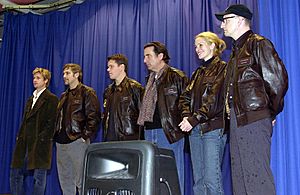
By December 2020, Warner Bros. Pictures decided to release all its 2021 films in theaters and on its streaming site HBO Max at the same time. Many people in the film industry were upset by this decision.
Since 2019, American streaming platforms like Netflix, Disney+, and Apple TV+ have become very popular. They now compete with traditional movie theaters. Some people in the industry worry that films are being treated more like "content" instead of art. This means movies are seen more for their brand and money-making potential.
Films like Space Jam: A New Legacy and Red Notice are sometimes seen as examples of this trend. Critics have called Space Jam a long advertisement for HBO Max. It features many characters from different Warner Bros. movies.
Famous directors like Martin Scorsese and Quentin Tarantino have expressed concerns. Scorsese said that cinema as an art form is being "devalued" and reduced to "content." Tarantino called the 2020s one of the "worst" times in Hollywood history. Director James Gray suggested that studios should invest in different types of films, not just blockbusters. He believes this would encourage more people to go to the movies.
See also
 In Spanish: Cine de los Estados Unidos para niños
In Spanish: Cine de los Estados Unidos para niños
- African American cinema
- Category:Documentary films about Hollywood, Los Angeles
- Category:Documentary films about the cinema of the United States
- Category:Films about Hollywood, Los Angeles
- Lists of American films
- American comedy films
- American Film Institute
- History of animation in the United States
- List of films in the public domain in the United States
- Motion Picture Association of America film rating system
- National Film Registry
- General
- List of cinema of the world
- Photography in the United States of America
- Cinema of North America


